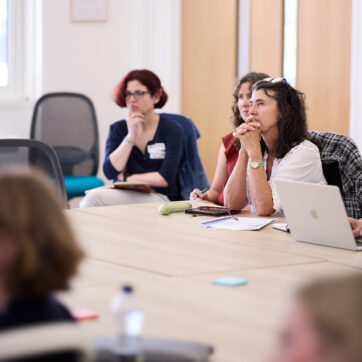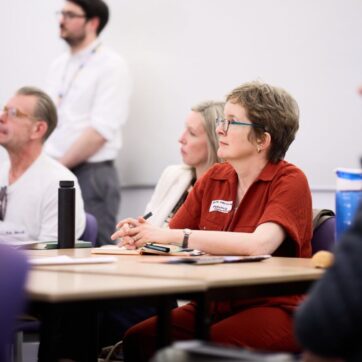We are all living longer; since 1850, we’ve gained around 2.5 years of life expectancy per decade and it’s estimated that one in three children born today will live to be 100 years old. In Europe there is one retiree for every four people of working age, by 2060 this is expected to rise to one in two.
In our exhibition, ‘How to get to 100 – and enjoy it’, we ask people to explore how our early years, lifestyle, work and where we live can affect our lifespan.
For social scientists, finding innovative ways to engage the public with our research can be tricky. Since people themselves, their lives and experiences are what concerns us we rarely have a practical experiment for people to get their hands on, or an engineered machine for people to try out. At the ESRC Centre for Population Change we developed ‘How to get to 100’ when we were invited to work with our European partners, Population Europe, to take on the challenge of getting population research out of journals and into the public sphere.
By developing an interactive exhibition and app we allow people a chance for hands-on learning by exploring population statistics through simulations and games. The exhibit gets people thinking about the challenges and opportunities posed by an ageing population and what it means for them, their family, and their neighbours. By exploring the life span we present complex research that is meaningful to the individual and offer a holistic view of population and society.
Topics such as ageing, pensions, migration and who is having babies and when, are a daily focus of media attention. Like all scientists, demographers face the challenge of debunking myths and ensuring that knowledge shared is evidence based. The exhibition encourages people to question their assumptions about population and consider new perspectives. For example, when thinking about how long they will live, people tend to give weight to the lifespan of their grandparents or great-grandparents, but we know that our genes only make up a quarter of the factors determining how long we live. By sharing this knowledge we are able to empower people to change behaviours that influence their own longevity.
We use the exhibition as a tool to open up conversations between researchers and the public, and in turn people can use the free app as a talking point with others. We hope that visitors leave the exhibition with a better understanding of the issues around population change, and curiosity to find out more in the future.
By presenting social science research in this way, we have been able to break down some of the boundaries between researchers and the public. And this week (14-17 February) ‘How to get to 100’ will be showcased on the international stage at the coveted American Association for the Advancement of Science (AAAS) Annual Meeting that boasts over 10,000 visitors over four days.
The exhibit, chosen to represent ESRC-funded investment, will sit alongside exhibits from EPSRC and NERC as an example of great research from the UK. Research featured in the exhibition brings together knowledge from across disciplinary boundaries including demographers, economists, gerontologists, statisticians, geographers, sociologists who have worked together to find solutions to societal challenges on population change. Fittingly, the meeting theme is ‘Science Transcending Boundaries’.
Being able to communicate social science in this way is vital for stimulating further impact, allowing our funded research to demonstrate how excellent research contributes to our society and economy. By using an interactive setting to bring this wide area of research to life, people are able to reassess their beliefs and ideas on population now, and our prospects for the future.
Our hope is that people will come away seriously considering the importance population changes have on our world, both for society as a whole, as well as the economy and wider policies effecting communities, space and place. Eventually, we hope that continuing to engage people in this way will contribute to a better understanding of policy issues, and reframe debates on population change.
Teresa_McGowan 150Teresa McGowan is Research Manager of the ESRC Centre for Population Change (CPC) at the University of Southampton. In her role, Teresa manages the centre’s research portfolio as well as overseeing the knowledge exchange and communication of the centre. Using her background in social statistics her work aims to expand engagement with public and policy audiences to improve demographic literacy. Email t.mcgowan@southampton.ac.uk
The AAAS meeting runs from 14-17 February 2019 and you can keep up to date by following #AAASmtg.
CPC is on Twitter @cpcpopulation and Facebook.
The project to develop and promote the exhibition across Europe is led by the Max Planck Institute for Demographic Research in Germany. In conjunction with Population Europe – a network of leading European experts specialising in communicating demographic knowledge to a wider public – the CPC has taken the lead in creating country specific content and touring the exhibition in the UK, Brussels and the US.
Teresa McGowan is Research Manager of the ESRC funded Centre for Population Change based in Social Statistics & Demography at the University of Southampton.
Source: https://blog.esrc.ac.uk/2019/02/11/how-to-live-to-100-and-tell-people-about-it/
Teresa McGowan, Research Manager of the ESRC funded Centre for Population Change based in Social Statistics & Demography at the University of Southampton


